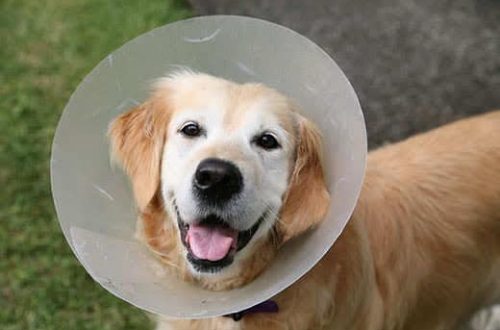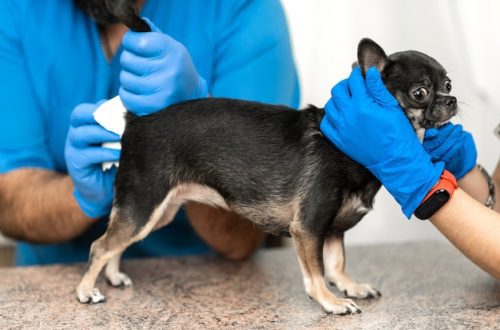
Deaf Dog Care Tips: Communication and Safe Behavior
When you first brought a pet home, you knew you would do everything you could to protect and take care of it. Over the years, you’ve taken him to the veterinarian for his annual checkups, to the dog park so he can interact with his family, and even to take him on vacation. For years, your four-legged friend has been healthy and cheerful. And you could not even imagine that your dog will lose his hearing. But it happened. It’s time to re-learn how to communicate with your pet and ensure its safety.
Deafness in dogs can occur at any time. It becomes apparent at the moment when the animal stops responding to some general events: when the doorbell rings, when you put food in its bowl or call its name. It’s hard to come to terms with the idea that a pet has gone deaf, but that doesn’t mean they can’t continue to live a fulfilling life. It only means that you need to change the approach to communicating with your pet.
Contents
Common Causes of Deafness in Dogs
According to George Strain’s book Deafness in Dogs and Cats, congenital deafness is when a dog is unable to hear at birth. But there are many factors that can cause dogs to lose their hearing over time. Old age is one of the reasons why dogs start to lose their hearing. Another cause of deafness or hearing loss in dogs can be ear injuries or chronic ear infections. Finally, poisoning with drugs or chemicals can lead to deafness.
Some breeds are more prone to congenital deafness or its onset over the years. Strain, a professor of neuroscience and lead veterinary scientist in the Department of Veterinary Medicine at the University of Louisiana, has linked 100 dog breeds with congenital deafness to some of the breeds most likely to be born deaf. Notably, Strain considers dogs with white pigmentation to be more prone to this disease. According to Lowell J. Ackerman’s The Genetic Link: A Guide to Health Problems in Purebred Dogs, Dalmatians have a very high percentage of dogs with congenital deafness.
How to test your dog’s hearing
To test your dog’s hearing, stand behind him when he is either sleeping or looking the other way. Make sure the dog is unaware of your presence. She should not see you or feel your movements (no need to step heavily on the floor next to her). Make some loud sound. Has your dog shown that he hears him? Did she raise her ears or turn around?
If not, make an appointment with your veterinarian to have her hearing tested. If your pet heard a loud sound, but it seems to you that she is still losing her hearing, try to reproduce sounds of a different volume range. Hit the frying pan to test your response to low sounds. Clap your hands for mid-range sounds, and blow your whistle to test your response to high-pitched sounds.
Preventing Hearing Loss in Dogs
Keeping your dog in optimal health is important to slow the process of hearing loss. You have always provided your pet with a healthy diet, and now that he has begun to lose his hearing, it is important that his diet remains complete. Make sure your pet’s food is of a high quality, balanced composition and that he gets enough water throughout the day.
Also, keeping your pet’s ears clean will reduce the chance of hearing loss. Ask your veterinarian to show you how it’s done. Then practice in his office. Only after you get permission can you clean your dog’s ears yourself. Clean her ears as gently as you clean yours.
As with humans, it’s helpful to keep your dog away from loud noises that can damage his hearing. Animal ears are more sensitive, so loud noises are more of a risk to their hearing. If you have loud music or play music, make sure the dog is in a separate room. If you’re having a party and you’re setting off fireworks, keep your dog outside, not only because he might get scared, but also to reduce noise exposure to his ears.
Changing Your Dog’s Environment
If your dog is losing his hearing, then you need to learn new ways to communicate with each other. If hearing loss develops, work on adding hand signals to verbal commands. In case of sudden deafness of the pet, hand commands should be used more intensively. Whatever it is, don’t despair. If your dog was well trained prior to losing his hearing, he will quickly master any new exercise. She, like you, just needs to get used to the lack of hearing. Keep this in mind and keep training her.
A deaf dog should not be allowed to roam unsupervised. If your dog suddenly loses his hearing, or it happens gradually, make sure that he is always on a leash. If she spends time in the yard, then she should be tied up or have a fence installed so that she can move freely in a safe environment for herself. When you leave the house, keep your dog on a leash.
In addition to the leash and collar, your dog’s identification tags need to be updated. Hang one with your contact information, and on the second, indicate that the dog cannot hear. If you’re worried about losing your dog, consider getting a collar with a bell. Maybe it’s time to think about a microchip.
There are several ways to help a deaf dog in everyday life. In the evening, you can attract her attention with the help of light. You can light a lantern in the yard when it’s time to enter the house. The overhead light in the room can be turned off, on and off again to alert the dog that the family is going to bed. In addition, do not forget about the excellent sense of smell of the pet. By using different scents in your workouts, you can help her associate your team with a particular scent.
Adapting to the dog’s daily routine
A deaf dog may become frightened of approaching people or animals. Exercise can help soften the auditory startle reflex. During training, give your pet healthy treats – this will be a good motivation for him. Start by approaching your dog from different places, offering treats as you approach. Next, try waking your dog (in this situation, he can be very frightened), but do it gently – and immediately give a treat. A smart way to wake up a deaf dog is to walk vigorously (so it senses your approaching footsteps) on the floor next to it, or gently tap on its bedding.
You take home a dog that no longer hears
If you’re looking to adopt a pet, a dog with a partial or total hearing loss might be perfect for your family. Before you bring her home, prepare your home as if you were expecting a healthy pet. Invite your family to watch motivational or educational videos about deaf dogs. After that, bring a new pet into the house. A deaf dog may require more attention and patience and will need additional training, but over time and with the condition of your love for him, he will become part of your family. A deaf dog can be just as funny and loving as other dogs. Moreover, she can show her love even more because she has learned to rely on other feelings. She will stick close to see your movements and snuggle up to you to feel your closeness. Never allow yourself to be frustrated by your pet’s deafness. There are many ways for both of you to make your relationship amazing.





